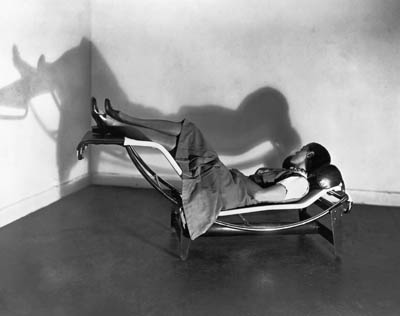Schwarz
View current page
...more recent posts
texas wear subset of melmac
solar pool heater
from off-grid
calling adam kalkin
They first announced they were taking orders in January of '04--just over three years ago and yet with all this publicity we never heard anything about one being built. However, Adam Kalkin's website currently says there is a 6 month waiting list and there was another article just last month
crumbly chumley's
AIA top 150 american buildings
velvets 1966 super8 at a high school in nj
Fugs Tuli Kupferberg Sings the Bum Song and explains

Judd
lived in new york. began making furniture in 1973, when he moved from to marfa, in texas. the reason was practical, as he couldn’t find anything suitable locally – the first pieces he executed were beds for his children. the early furniture was executed with plain planks of pine. ‘I figured it out so I could tell the lumberyard what I wanted – four pieces, five feet long, three pieces, two feet long – and they would cut them for me. they wouldn’t do too many and they wouldn’t do anything fancy. they would just chop it up. for a long time the basic module was the width of the wood: 1x12s, 2x12s. for some racket of the lumberyards, the twelve inches were really eleven inches. most of the new work is in metric measurement.'said donal judd. later he worked in sheet metal. the wooden pieces are all still made by one fabricator who worked with judd and made the furniture to his specification. the metal is made of aluminium with a choice of 20 different coloured enamels. some pieces also come in copper which is particularly spectacular.
pegboard book shelves
tim hunkin's the secret life of machines
australian container home (built!)
charlotte perriand
Here, a personal anecdote might be relevant. When I interviewed Perriand in 1997 and mentioned the photograph of her reclining on the chaise lounge with her head turned away from the camera, she responded angrily to a question about Beatriz Colomina’s reading of the image as representing Le Corbusier’s denial of her authorship and creative vision.(2) Perriand told me that she herself had set up the shot, that Pierre Jeanneret took the photo, and that Le Corbusier played no role in its conception and in fact was not there at the time. She insisted that it was her choice to turn her head in order to emphasize the chaise rather than its occupant, and that it was also her choice to use that image in her photomontage of the model apartment that she designed with Le Corbusier and Jeanneret for the 1929 Salon d’Automne apartment building. Nor was she troubled by the fact that the pivoting chair that she designed and displayed on her own was at- tributed jointly to Le Corbusier-Jean- neret-Perriand when Thonet began producing the partnership’s furniture in 1930. Perriand saw this as an opportunity to have the chair manufactured and con- cluded that it would have more impact as part of the atelier’s line of tubular-steel furniture: attaining individual recognition as a designer was less important than hav- ing the chair regarded as part of a collec- tive vision of modern living. She saw herself as an equal participant with consid- erable choice and control in her collabora- tion with Le Corbusier and Jeanneret.
A second issue to consider is the rela- tionship between Modern architecture and the entry of women into the profession. Although Le Corbusier was no feminist hero, his atelier seems to have been a place where several women designers chose to work, including Perriand and Stanislavia Nowicki before World War II and Edith Schreiber, Blanche Limco, and Maria Fenyo immediately afterward. To what extent did the culture of the Modern Movement, and in particular Le Cor- busier’s commitment to new attitudes and social mores, help foster women’s partici- pation in the profession? Did the adven- ture of creating something new, the Modern Movement’s commitment to col- lective values, and its emphasis on collabo- ration (however paradoxical, given Le Corbusier’s self-proclaimed role as artist- genius) prove especially conducive to strong, independent women? Judging from Perriand’s descriptions, not only did she consider herself the equal of the male employees, but she also enjoyed their warmth, camaraderie, and respect. The at- elier provided an environment in which she and her colleagues, male and female, could grow and develop professionally.
Third, her salon exhibitions of the late 1920s call into question the stereotypical characterization of Modernism as instru- mental rationalism and therefore male. What is evident in her 1928 dining room and the 1929 model apartment, as well a in the broader movement for domestic re- form during that decade, was that scientif- ic planning and functionalism were not simply male concerns but were also signif- icant components of women’s vision of do- mestic liberation. Much feminist scholar- ship has been devoted to the demystifica- tion of hierarchical distinctions between attributes such as rationality, functional- ism, and structure (traditionally associated with male truth) and characteristics such as decoration, superfluity, and fantasy (as- sociated with a more feminine subjective sensibility) and to disputing the subordi- nation of the latter. But what becomes clear when one examines the interwar dis- cussions about “scientific” house- hold management is that such a dichotomy is much too simplistic. The domestic reform movement contributed to the feminization of rationality, just as women (and society at large) increasingly perceived rationality as fundamental to their own identities. The idea that housework could be ration- alized and made “scientific” meant that all women—even homemakers—could see themselves, and be seen, as rational and scientific. Though rarely acknowledged in such terms, the functionalism and rational planning of Modern domestic architecture were similarly connected to women’s iden- tities. To repeat: Perriand’s salon exhibits in 1928 and 1929 challenge characteriza- tions of both Modernism and rationality as exclusively male.
mirrored glass switch-plates
What is modern, anyway? Is it classic 20th century (as in Modernism, with a capital “M”) or contemporary (modern with a small “m”)? The answer, of course, is both. And while you’re at it, why not add something really old to the mix? Who wants to live in a period room, even if the period is the 1960s?crazy about the "cratelike" corbusier wood table/stool in the slide show
Big D
Maybe, then, it wasn't so shocking that a cadre of Southern Methodist University professors protested the location of the George W. Bush presidential library on campus. But few who've been around Texas for any length of time can't help but be surprised that Dallas has learned to stop snubbing Fort Worth, its more secure and deeply resented cousin, so that the two cities can join forces in creating one whopping destination for art and architecture fans. As the Morning News architecture critic David Dillon told me, “The city is really coming into its own.” Particularly when considered with Louis Kahn's Kimbell and Tadao Ando's Modern Art Museum in Fort Worth, Dallas is, in a way, he said, “a place you can't not go.”

